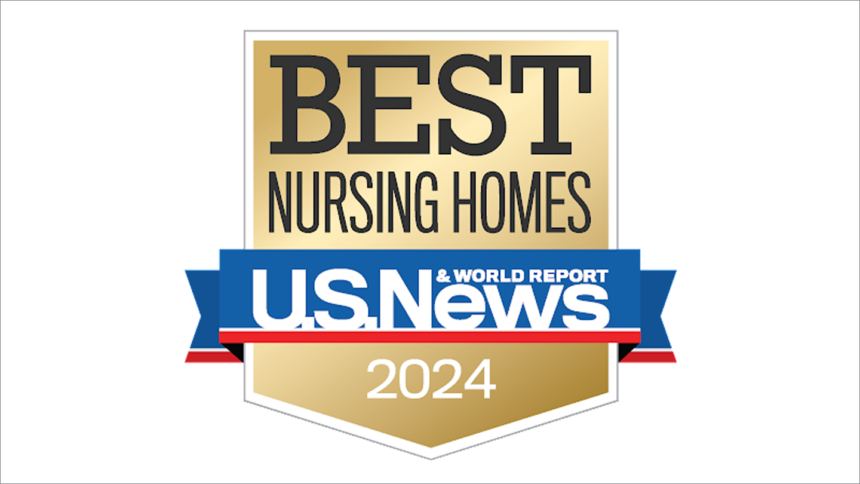
For the first time since U.S. News & World Report began rating nursing homes in 2009, the magazine has added a direct care measure to evaluate the role of registered nurses in patient care.
The change reflects the heightened public awareness around staffing levels as federal officials weigh whether to move forward with significant, new requirements that would compel facilities to hire an estimated additional 102,000 nurses and nurse aides.
In all, more than 2,800 nursing homes, 19% of the 15,007 rated for the 2024 U.S. News list, were recognized as “Best Nursing Homes” for their short-term rehabilitation, long-term care, or both.
Nursing homes are evaluated on a battery of patient and resident outcomes, including infection rates and hospitalization; process measures, such as reliance on antipsychotic drugs; health inspection results; staffing levels and other quality metrics.
While the ratings do rely on specific data collected by the Centers for Medicare & Medicaid Services, analysts no longer include overall or domain-specific star ratings in their calculations. And in many cases — 445 this year — a nursing home awarded 4 or 5 overall stars by CMS may only net a 1 or 2 rating from U.S. News.
The major differentiators are the magazine’s increased reliance on patient and resident outcomes, staffing levels and process measures, which are emphasized over inspection results, said Ben Harder, chief of health analysis and managing editor at U.S. News.
“If a facility does well on its health inspection in the CMS methodology, they can get away with an awful lot in terms of not having much in the way of staffing and having pretty mediocre outcomes, and they may still get a pretty good rating from CMS,” Harder said. “In our methodology, we have this holistic approach to short-term care, and separately long-term care: If a nursing home is having lots of its patients or its residents end up in the hospital or its staffing is clearly below industry standards, they’re less likely to get a good rating in our system.”
Staffing has played a larger role in the U.S. News rankings over the last several years, as more Payroll Based Journal data, all of it auditable, has been made available publicly and with increasingly broader data points. Its growing use reflects both consumers’ interest in knowing there will be enough staff to care for them or their loved ones, but also a recent focus by both academics and policymakers on the issue.
The 2024 report found 436 nursing homes failed to meet the current RN rule for 8 hours of coverage, seven days a week, on 20% or more days.
And data collected this summer also showed that fewer than 5% of evaluated nursing homes could meet both the existing 8-hour requirement and newly proposed staffing requirements for 24/7 RN coverage, 0.55 hours of direct RN care per patient day and 2.45 hours of direct certified nurse aide care per patient day. Those that met both present and possible staffing requirements were 54 times more likely to be rated a “Best Nursing Home” by U.S. News than those that consistently failed to meet the current standard.
The magazine went beyond CMS reporting to determine how many RN hours were being spent directly with patients.
“There has been concern about nurses in administrative roles, who have a nursing degree, but may not be actually providing bedside care, and so, how meaningful is that, compared to another facility where they have a similar number of RNs, but they are actually engaged in bedside care?” Harder said. “And a shortage of nurse aides can be really crippling for care, particularly in that long-term care setting, a shortage of therapists can also be a problem for short-term care.”
While the goal of the ratings is to boost consumer choice at a time when they may be forced into making a rushed decision, Harder said good results have also paid off for nursing homes.
Increasingly, they’re being used in outreach to patients and other stakeholders, ranging from hospital systems to Medicare Advantage plans.
“When a nursing home, particularly on the post-acute side, is getting good outcomes and has the staffing necessary to keep getting good outcomes and, therefore, keep doing well in our rating system, that’s something they want not just local patients and families to know, but also other healthcare organizations,” Harder said.
Full results, including facilities sorted by location are available for free at U.S. News & World Report.




